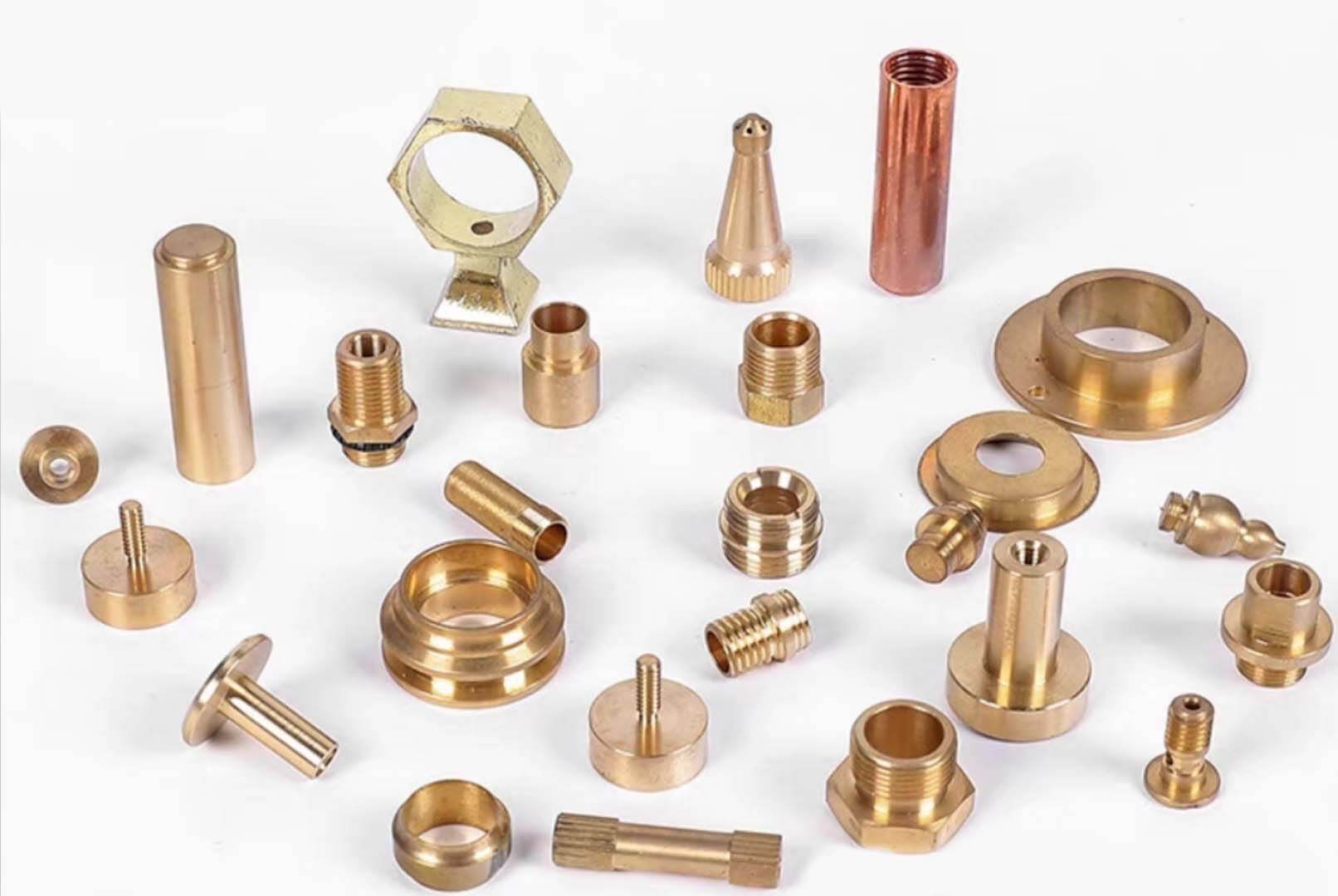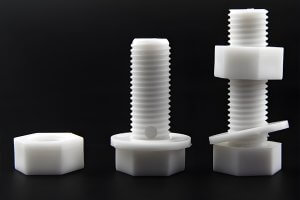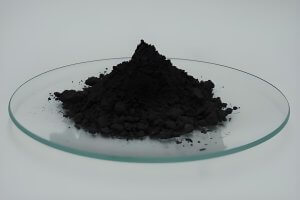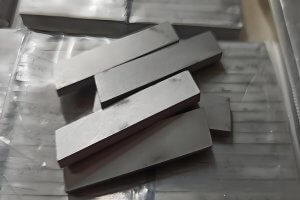Introduction
The Importance of Brass Fittings
When I first entered the world of industrial manufacturing, I quickly realized how vital small components like brass fittings are in a wide range of industries. From plumbing systems in homes to complex hydraulic machinery in manufacturing plants, brass fittings serve as the backbone for creating secure, durable connections. These small yet crucial components are used to connect pipes, tubes, and other system components, ensuring that the flow of water, gas, or oil remains uninterrupted.
Brass is often the material of choice for these fittings due to its excellent corrosion resistance, high machinability, and ability to withstand high pressures and temperatures. But as important as the material is, the method by which brass fittings are produced can make all the difference in terms of quality, performance, and reliability.
In particular, CNC machining has revolutionized the way brass fittings are produced. It offers unparalleled precision, repeatability, and the ability to handle complex geometries, which are essential when producing fittings that must meet strict quality standards.
The Role of CNC Machining in Brass Fittings
One of the most exciting things I’ve learned about CNC machining is its ability to turn even the most complex designs into perfectly executed brass fittings. I’ve seen firsthand how CNC machining can optimize the production of brass fittings, enabling manufacturers to produce precise, high-quality components with minimal variation between parts.
At its core, CNC machining uses computer programs to control machine tools such as mills, lathes, and drills. This allows for intricate shaping and cutting processes that would be difficult, if not impossible, to replicate with manual methods. CNC machining eliminates human error and significantly enhances the accuracy of the final product.
What’s more, CNC machining can handle larger production volumes without sacrificing quality. This means that even for high-demand industries, manufacturers can rely on CNC machining to produce brass fittings that meet the required specifications quickly and efficiently.
In this article, I aim to help you understand how CNC machining can elevate the production of brass fittings. Whether you’re an engineer, a manufacturing manager, or just a curious learner, by the end of this guide, you’ll have a clearer understanding of the role CNC machining plays in optimizing brass fittings production.
Basic Knowledge of Brass Fittings
2.1 What Are Brass Fittings?
Brass fittings are crucial components used to connect various elements in mechanical, plumbing, and hydraulic systems. Made from brass, a copper-zinc alloy, they offer exceptional resistance to corrosion, high machinability, and durability. Brass fittings come in many shapes and sizes, such as threaded connectors, valves, adapters, flanges, and elbows, each serving a specific purpose in various industries like plumbing, automotive, and aerospace.
Common Types of Brass Fittings:
- Threaded Connectors: Used for connecting two pipes with a screw thread.
- Valves: Control the flow of fluids and gases in a system.
- Adapters: Used to connect different pipe sizes or materials.
- Flanges: Provide a method to attach pipes together securely.
- Elbows and Tees: Used for changing the direction of fluid flow or creating branch connections.
To understand how brass fittings compare to other materials in terms of performance and suitability, here’s a brief comparison between the different types of brass alloys used in the production of fittings.
2.2 CNC Machining for Brass Fittings
CNC (Computer Numerical Control) machining is a highly precise manufacturing method that plays a crucial role in producing high-quality brass fittings. By utilizing CNC machines, manufacturers can produce fittings with intricate shapes and tight tolerances, which are difficult to achieve with manual methods. But what makes brass the preferred material for these processes?
Properties of Brass in Fittings Manufacturing
Brass’s excellent machinability and corrosion resistance make it an ideal material for CNC machining. But brass alloys can vary widely in terms of composition, which in turn affects their mechanical properties and applications. Below is a comparison of the most commonly used brass alloys in fitting manufacturing, highlighting their key properties and applications.
Table 1: Types of Brass Alloys Used in Fittings
| Alloy Type | Composition (Cu/Zn) | Properties | Typical Applications |
|---|---|---|---|
| CZ121 | 60/40 | High corrosion resistance | Plumbing fittings, valves |
| CZ132 | 65/35 | Excellent machinability | Gas fittings, water connectors |
| C36000 | 63/37 | High strength, good fatigue resistance | Aerospace components, precision fittings |
Table 2: Brass Fittings vs. Other Materials
| Material | Corrosion Resistance | Durability | Cost | Machinability | Common Use Cases |
|---|---|---|---|---|---|
| Brass | Excellent | High | Moderate | Easy | Plumbing, automotive, HVAC |
| Stainless Steel | Very High | Very High | High | Moderate | Industrial fittings, valves |
| Plastic | Moderate | Moderate | Low | Easy | Residential plumbing, low-pressure systems |
As you can see from the tables above, brass alloys offer an excellent balance of properties for specific applications, making them particularly suitable for CNC machining. The choice of alloy is important in ensuring the fitting performs well in its intended application while maintaining cost-efficiency.
Key CNC Machining Techniques for Brass Fittings
CNC machining offers several advantages when it comes to manufacturing brass fittings. This process enables precise control over the manufacturing of intricate parts, reducing human error and improving efficiency. Below, we will discuss the key CNC machining techniques used for producing brass fittings, and how each technique contributes to quality and efficiency in production.
3.1 CNC Turning for Brass Fittings
CNC turning is one of the most common machining techniques used in the production of brass fittings. This process involves rotating a brass workpiece while a cutting tool moves along its surface to remove material and shape the part. CNC turning is particularly effective for cylindrical brass fittings, such as valves, connectors, and adapters, due to its ability to create smooth, accurate round features.
Key Advantages of CNC Turning for Brass Fittings:
- High Precision: CNC turning machines provide extremely precise cuts, ensuring that brass fittings meet strict tolerance requirements.
- Efficiency: CNC turning is fast and effective, making it ideal for mass production of cylindrical parts.
- Complex Geometries: CNC turning allows the creation of complex shapes like threads, grooves, and other intricate features often required in brass fittings.
Table 1: Comparison of CNC Turning Machines for Brass Fittings
| CNC Machine Type | Precision Level | Best Use Case | Key Features |
|---|---|---|---|
| 3-Axis CNC Lathe | High | Standard cylindrical brass fittings | Simple cylindrical shapes, threading |
| 5-Axis CNC Lathe | Extremely High | Complex fittings with intricate features | Multi-axis movements, more complex geometries |
| CNC Swiss Lathe | Very High | Small, precise fittings (e.g., connectors, valves) | Extremely tight tolerances, high-speed machining |
CNC lathes, especially Swiss lathes, are often used when producing smaller, high-precision brass fittings that require tight tolerances and intricate features.
3.2 CNC Milling for Brass Fittings
CNC milling is another critical technique for brass fittings, particularly when more complex, non-cylindrical features are required. Milling involves rotating a cutting tool against the brass workpiece, allowing for a wider range of geometries and configurations than CNC turning alone. For brass fittings, CNC milling is commonly used to create features like flat surfaces, holes, grooves, slots, and contours.
Key Advantages of CNC Milling for Brass Fittings:
- Complex Geometries: CNC milling allows the production of parts with complex, multi-dimensional shapes that are essential for many brass fittings.
- Versatility: Milling is versatile, enabling manufacturers to create not only simple but also highly complex brass fitting designs.
- Precision: As with CNC turning, CNC milling offers high precision and repeatability, ensuring the consistent quality of brass fittings.
Table 2: Comparison of CNC Milling Machines for Brass Fittings
| CNC Milling Type | Precision Level | Best Use Case | Key Features |
|---|---|---|---|
| 3-Axis CNC Milling | High | Basic brass fittings with flat surfaces | Simple geometries, drilling, tapping |
| 5-Axis CNC Milling | Extremely High | Complex, multi-surface brass fittings | Multi-dimensional machining, intricate cuts |
| Vertical CNC Milling | High | Fittings with high vertical geometries | Excellent for deep holes and complex contours |
CNC milling is especially advantageous when producing fittings that require multi-surface cutting, such as flanges, adapters, and connectors with complex profiles.
3.3 CNC Drilling for Brass Fittings
Drilling is an essential CNC operation for brass fittings, particularly when creating holes for connecting parts or fluid passageways. CNC drilling machines are designed to remove material from a workpiece by using a rotating drill bit to create cylindrical holes.
Key Advantages of CNC Drilling for Brass Fittings:
- Accuracy: CNC drilling allows for accurate hole placement, which is crucial for ensuring the functionality and durability of brass fittings.
- Consistency: CNC drilling offers excellent consistency across production runs, reducing the potential for human error.
- Speed: Drilling operations can be carried out at high speeds, enhancing the efficiency of large production runs of brass fittings.
By incorporating CNC turning, milling, and drilling into the manufacturing process of brass fittings, manufacturers can achieve greater precision, speed, and overall efficiency. Each technique offers distinct benefits that are suited for different types of brass fittings and production requirements. Whether producing simple cylindrical shapes or intricate multi-dimensional components, CNC machining provides the tools needed for high-quality, cost-effective production.
Optimizing CNC Machining for Brass Fittings
Optimizing CNC machining for brass fittings is essential to achieving high-quality, precise, and reliable components. Over the years, I’ve learned that, while CNC machining offers tremendous flexibility, it is the correct choice of parameters, tools, and techniques that really makes the difference in the final product. Below, I’ll break down some of the key techniques that can help optimize CNC machining for brass fittings and improve the overall product quality.
4.1 Selecting the Right CNC Machine
The first step in optimizing CNC machining for brass fittings is choosing the right machine for the job. Different types of CNC machines are designed for various purposes, and selecting the correct one will depend on the specific requirements of the brass fittings you need to produce.
Types of CNC Machines Used in Brass Fittings Production:
- 3-Axis CNC Milling Machines: These are the most common and widely used CNC machines. They are well-suited for producing simple, precise components with relatively low complexity.
- 5-Axis CNC Milling Machines: For more complex brass fittings, 5-axis machines are preferred. They can work on multiple sides of a workpiece simultaneously, significantly reducing the need for manual handling and improving efficiency.
- CNC Lathes: These machines are best for turning operations, where the brass fitting is rotated while a cutting tool shapes it. CNC lathes are particularly useful for producing round components like valves, adapters, and some types of connectors.
By using the right machine for the job, you ensure that the brass fittings are machined with the right balance of speed, precision, and efficiency.
4.2 Key CNC Machining Processes for Brass Fittings
Once the right CNC machine is selected, the next step is choosing the proper machining process. Brass fittings often require a combination of different processes, depending on their shape, size, and complexity. Here are some common processes used in CNC machining for brass fittings:
- Milling: Milling is a fundamental CNC process where a rotating cutter removes material from the workpiece to create specific shapes, such as slots, grooves, or flat surfaces. For brass fittings, milling is used to create intricate designs and achieve precise dimensions.
- Turning: Turning is a process that involves rotating the workpiece on a lathe while a cutting tool shapes it. This method is perfect for creating cylindrical parts, such as threaded connectors, valves, and pipes.
- Drilling and Tapping: Drilling is used to create holes for threaded connections, while tapping is employed to cut internal threads inside a hole. These processes are particularly important for making brass fittings like connectors and adapters that require precise internal threads.
- Grinding: Grinding is used for finishing, achieving a smooth, high-precision surface on brass fittings. This process ensures that the fittings meet exacting surface finish requirements.
Each process plays a vital role in the production of brass fittings, and optimizing them means improving the efficiency, accuracy, and quality of the final product.
4.3 Material Selection and Cutting Tools
Choosing the right cutting tools and brass material is another critical aspect of CNC machining optimization. Over the years, I’ve found that the quality of the material and tools used can directly affect the machining process and the overall quality of the brass fitting.
- Material Selection: Not all brass alloys are the same. For example, C36000 brass is commonly used for machining because it has high machinability, while C28000 is better suited for applications requiring corrosion resistance. Choosing the right alloy ensures that the fittings are durable and perform well in their specific applications.
- Cutting Tools: CNC machining for brass requires specialized cutting tools, such as carbide inserts and high-speed steel (HSS) tools, that can handle the soft yet tough nature of brass. Using the right cutting tools ensures that the cutting process is efficient, and the quality of the brass fittings is maintained throughout the machining process.
By optimizing material selection and cutting tools, manufacturers can reduce wear on machinery, improve production speed, and maintain consistent quality in brass fittings.
Common CNC Machining Challenges and Solutions
CNC machining offers numerous advantages, but it also presents challenges—especially when working with materials like brass. Over the years, I’ve encountered several common issues that can arise during CNC machining of brass fittings. In this chapter, I’ll share some of these challenges and discuss the solutions I’ve learned from experience to overcome them.
5.1 Material Chips and Burr Formation
One of the biggest challenges when machining brass is the formation of chips and burrs, which can affect the quality of the final product. Brass is a relatively soft material, and if not properly managed, it can form thin, stringy chips that stick to the cutting tool or workpiece.
Solution:
- Proper chip management: Using coolant systems or air blasts to remove chips from the workpiece helps prevent them from interfering with the machining process.
- Fine-tuning cutting parameters: Reducing the cutting speed or feed rate can prevent excessive chip formation and reduce burrs, resulting in cleaner brass fittings.
5.2 Tool Wear and Life
Brass, although relatively soft compared to other metals, still causes significant wear on CNC cutting tools. Over time, this can result in lower machining accuracy, increased downtime, and higher costs.
Solution:
- Regular tool inspection and replacement: Monitoring tool wear during machining and replacing tools when necessary can help maintain machining precision.
- Selecting high-quality cutting tools: Using carbide or coated tools designed specifically for brass can help improve tool life and reduce wear.
5.3 Surface Finish Issues
Achieving the right surface finish on brass fittings can be difficult, especially if the machining process is not optimized. Poor surface finish can affect the performance and appearance of the fittings, especially in high-precision applications.
Solution:
- Implementing a finishing process: After the primary CNC machining is complete, additional processes like polishing or grinding can be used to achieve the desired surface finish.
- Adjusting feed rates: Slower feed rates during critical machining operations can result in smoother surfaces, improving the overall quality of brass fittings.
By identifying and addressing these common CNC machining challenges, manufacturers can ensure the highest possible quality for brass fittings.
Real-World Applications and Case Studies
6.1 Industry Case Analysis
Over the years, I’ve had the privilege of working with various industries that rely on brass fittings, from plumbing to aerospace. Each industry presents unique challenges, but they all benefit from CNC machining’s precision and versatility.
- Case Study 1: Aerospace Industry – In the aerospace industry, brass fittings must meet extremely high standards of quality and precision. CNC machining was used to produce high-precision brass connectors for fluid systems that had to withstand extreme pressure and temperature variations. By optimizing machining parameters, the company was able to improve both the quality and efficiency of the manufacturing process.
- Case Study 2: Automotive Industry – Brass fittings used in automotive applications must have a high resistance to corrosion. CNC machining enabled the production of these fittings with precise internal threads, ensuring a reliable fit and long-term performance in harsh environments.
These examples highlight how CNC machining can optimize the manufacturing process of brass fittings, ensuring high-quality results even in industries with rigorous demands.
6.2 Customer Feedback and Success Stories
One of the best ways to improve CNC machining processes is by listening to customer feedback. Through ongoing communication with clients, I’ve been able to identify areas for improvement in our processes and fine-tune the machining parameters to deliver even better brass fittings.
- Customer Feedback: One client in the water treatment industry emphasized the importance of reducing tolerances for their brass valve fittings. By making slight adjustments to the machining process, we were able to meet their requirements and increase the performance of the fittings, which ultimately saved them time and money in production.
By closely working with customers and implementing their feedback, manufacturers can continually improve the quality and performance of brass fittings.
Conclusion and Key Takeaways
In this comprehensive guide, we’ve covered the fundamentals of CNC machining for brass fittings, including the techniques, challenges, and solutions that can help optimize the production process. By selecting the right machines, processes, and materials, and by addressing common machining issues, manufacturers can achieve superior quality and precision in their brass fittings.
I hope this guide has helped you understand how CNC machining can improve the production of brass fittings and optimize the process for better performance and reliability.
FAQ
1. What are brass fittings, and why are they important in machining?
Brass fittings are components made from brass material used in various industrial applications such as plumbing, hydraulics, and machinery. They are important because they offer excellent durability, corrosion resistance, and machinability.
2. How does CNC machining improve the quality of brass fittings?
CNC machining improves the quality of brass fittings by providing high precision, repeatability, and the ability to produce complex shapes. This ensures the fittings meet stringent tolerances, which are critical in applications where reliability and performance are essential.
3. What types of brass fittings are commonly produced using CNC machining?
Common types of brass fittings produced using CNC machining include threaded connectors, valves, adapters, flanges, and other critical components used in plumbing, hydraulic, and mechanical systems.
4. How does CNC machining compare to traditional methods for producing brass fittings?
CNC machining offers significant advantages over traditional methods, including greater precision, the ability to handle complex shapes, and the ability to automate production for consistency and repeatability.
5. What types of CNC machines are best suited for brass fittings?
The most suitable CNC machines for brass fittings are typically multi-axis machines, including 3-axis, 4-axis, and 5-axis CNC machines. These machines can handle the complexity of the designs and offer high precision required for brass components.
6. What are the main challenges when CNC machining brass fittings?
Common challenges in CNC machining brass fittings include controlling heat generation, preventing tool wear, managing work hardening, and ensuring surface finish and dimensional accuracy.
7. How can CNC machining help improve the performance of brass fittings?
By using CNC machining, manufacturers can produce brass fittings with tighter tolerances, improved surface finishes, and more consistent production, resulting in better performance and longer-lasting products.
8. What should buyers look for when selecting a supplier for CNC machined brass fittings?
Buyers should evaluate the supplier’s CNC machining capabilities, including the types of machines they use, their ability to meet design specifications, their quality control processes, and their experience with producing brass fittings.
9. How can tooling choices affect the final quality of brass fittings?
Tooling plays a crucial role in CNC machining. The correct cutting tools, speeds, and feeds must be chosen to ensure high-quality finishes, precise dimensions, and minimal wear on tools during production.
10. What are the benefits of optimizing CNC machining for brass fittings?
Optimizing CNC machining for brass fittings leads to higher product quality, reduced production time, lower costs, and greater consistency in meeting industry standards and specifications.
11. How do customer feedback and case studies help improve CNC machining processes?
Customer feedback and real-world case studies provide valuable insights into machining challenges, opportunities for process improvement, and strategies for meeting customers’ specific needs and expectations in brass fitting production.
Other Articles You Might Enjoy
- Brass Fittings and CNC Machining: A Complete Guide for Buyers
Why Procuring High-Quality Brass Fittings is Crucial In my years of experience sourcing industrial components, one thing I've learned is that brass fittings are the backbone of countless systems—plumbing, hydraulic…
- Maximizing Precision in CNC Machining: Techniques and Tips
Importance of Precision in CNC Machining Precision is an fundamental component in the field of Computer Numerical Control (CNC) machining. It entails producing parts that are not only accurate but…
- Brass Precision Prototyping: Leveraging CNC Machining for Quick Turn Machining Solutions
Introduction to Brass Precision Prototyping and CNC Machining In the realm of prototyping, brass precision and Computer Numeric Control (CNC) machining play significant roles. Brass precision prototyping is a process…
- Online CNC Machining Quote for Brass Components: Fast and Efficient
Introduction to CNC Machining for Brass Components The technical sphere of manufacturing has witnessed a significant evolution with the advent of Computer Numerical Control (CNC) machining. This state-of-the-art technology, which…
- How Do Import Regulations Affect the Procurement of Brass CNC Machining Parts?
What Are the Global Import Regulations for Brass CNC Machining Parts? The global landscape for importing brass CNC machining parts is complex and varies significantly by country. Key players such…
- The Future of CNC Machining Parts with Environmentally Friendly Brass Alloys
As industries strive to become more environmentally conscious, the materials used in CNC machining are evolving. One of the most significant changes in this domain is the shift from traditional…
- Comprehensive Guide to CNC Machining Brass Screws
Brass screws are widely used in various industrial and commercial applications due to their superior mechanical properties and attractive appearance. This article will delve into the characteristics of brass, the…






